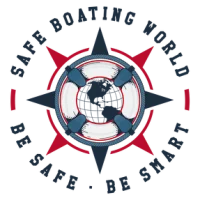Call: 1-800-832-7191

CT Recreational Boating Density
Exploring CT Recreational Boating Density Trends
CT Recreational Boating Density continues to rise as more residents and visitors enjoy Connecticut’s scenic waterways. With over 110 state parks and 2,626 newly protected acres of open space, boating access has expanded significantly. Because Connecticut is the fourth most densely populated state, managing waterway traffic is essential for safety and sustainability.
The Department of Energy and Environmental Protection (DEEP) monitors boating activity to guide infrastructure improvements and conservation efforts.
Factors Driving Boating Density in Connecticut
Several factors contribute to increased CT Recreational Boating Density, including population growth, tourism, and expanded access to state parks. DEEP’s partnerships with private organizations have introduced new recreational opportunities, such as tubing, rowing regattas, and guided tours. These additions attract more boaters to popular destinations.
Additionally, Connecticut’s investment in restoring state parks and launching interactive planning tools has made boating more accessible. Because of these enhancements, seasonal boating traffic has surged across inland lakes, rivers, and coastal zones.
Boaters must remain aware of congestion and follow safety protocols to reduce risk.
Environmental and Safety Impacts
Higher CT Recreational Boating Density affects both the environment and public safety. Increased traffic can lead to shoreline erosion, wildlife disturbance, and water pollution. Therefore, DEEP enforces regulations on wake zones, waste disposal, and invasive species prevention.
Boaters must also navigate crowded waterways with caution. Collisions, propeller strikes, and capsizing incidents become more likely when density increases. Because of this, DEEP promotes boater education and offers free safety checks through the Coast Guard Auxiliary.
Responsible boating helps preserve Connecticut’s natural resources and ensures enjoyable experiences for all.
Managing CT Recreational Boating Density Through Planning
DEEP uses data and public feedback to manage density effectively. Surveys and interactive maps help identify high-traffic areas and guide future infrastructure investments. These tools also support equitable access by highlighting underserved communities and transit-friendly launch sites.ct
Municipalities and nonprofits collaborate with DEEP to expand green spaces and improve waterway access. Because of these efforts, more residents can enjoy boating without overcrowding sensitive habitats.
Boaters can support density management by following posted guidelines, reporting hazards, and participating in conservation programs.
